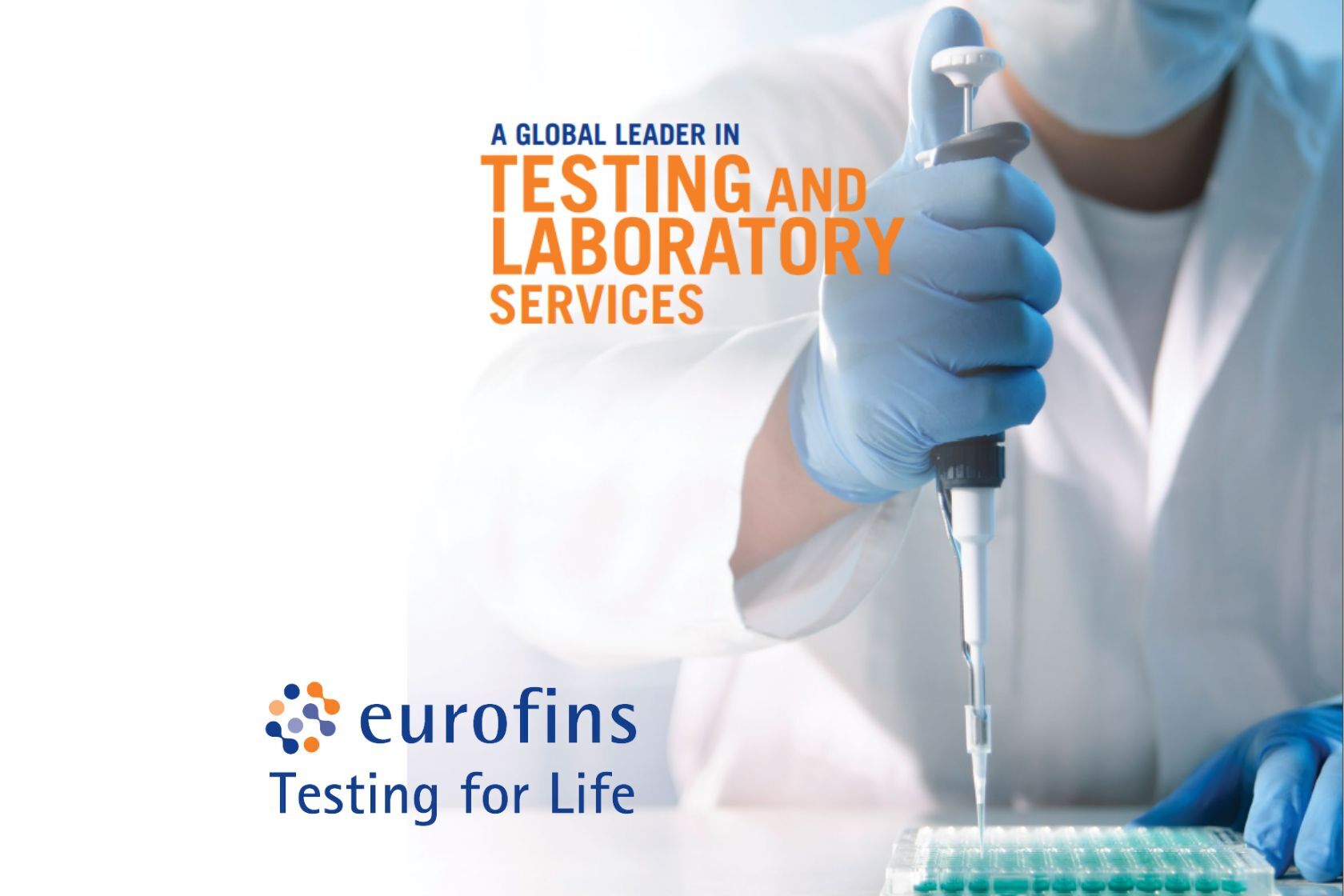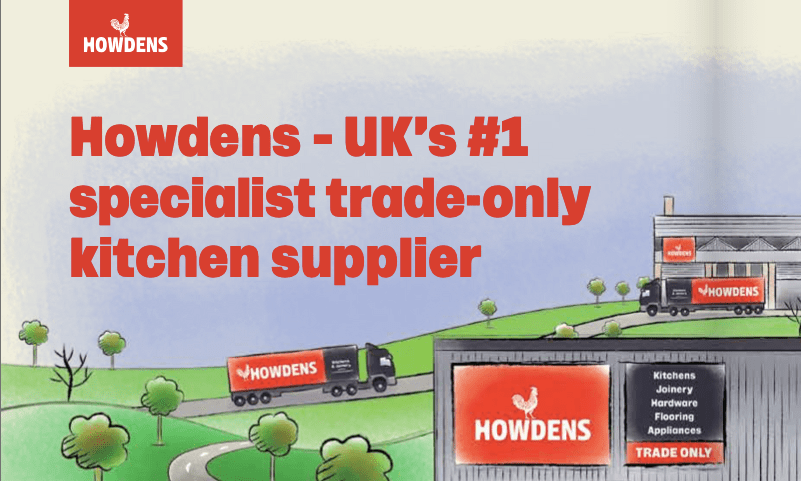2 July 2023
Your food diet is the first step towards a healthy lifestyle
Welcome to the third edition of the Monthly Stock Idea Lab publication. My goal is to save you time by curating exciting value opportunities. I truly believe that just by honing in on better options, you can significantly boost your investment results. That means rejecting 90% of stocks, doing more work on the remaining 10% and rejecting 90% of those.
No matter how smart you are, you will struggle to intelligently predict which cryptocurrency will do better in one year (Bitcoin or Ethereum, for example). It is the same with dining out. If a restaurant offers only burgers and fish & chips, you cannot make a healthy choice there. Avoiding junk food is the first step to a healthier life. It is the same in investing: by staying away from the meme or thematic stocks (remember, Beyond Meat or Peloton), you make the first step in the right direction.
No matter how smart you are, you will struggle to intelligently predict which cryptocurrency will do better in one year (Bitcoin or Ethereum, for example). It is the same with dining out. If a restaurant offers only burgers and fish & chips, you cannot make a healthy choice there. Avoiding junk food is the first step to a healthier life. It is the same in investing: by staying away from the meme or thematic stocks (remember, Beyond Meat or Peloton), you make the first step in the right direction.

The simple way to check if you are consuming “junk food” as an investor is to ask yourself how confident you are about a company’s future cash flow and how much imagination you require to justify the current price. Some businesses are going through so many changes that it is hard to have any visibility about their FCF in the future. Others may have a more recurring business model, and their FCF is more predictable, but you would have to believe in an extraordinary future when all their projects succeed and no competitor challenges their positions ever to justify their valuation.
If the asset is not generating cash flow, its price will depend on what others are willing to pay for it in the future. So your decision to buy this asset today is based on the assumption that others will be willing to pay more later. It is a different game. Still possible to make money, but it is much harder. At least for me. The wealthiest people have owned real businesses, not speculated about future asset prices.
Billionaire Joel Greenblatt, the author of several best-selling books, put it well:
If the asset is not generating cash flow, its price will depend on what others are willing to pay for it in the future. So your decision to buy this asset today is based on the assumption that others will be willing to pay more later. It is a different game. Still possible to make money, but it is much harder. At least for me. The wealthiest people have owned real businesses, not speculated about future asset prices.
Billionaire Joel Greenblatt, the author of several best-selling books, put it well:
“Choosing individual stocks without any idea of what you’re looking for is like running through a dynamite factory with a burning match. You may live, but you’re still an idiot.”
June’s MSIL stocks have at least one issue in common
The common themes among the ideas in June’s MSIL are high insider ownership, with the founder or his direct heir playing an active role in the company. Generally strong business economics (high margins, high returns on capital, low debt) and attractive long-term growth prospects (I am taking a pause with commodity investments for now).
However, since most of these quality characteristics are easily identifiable by the market, you must make the second step: understand whether the price is right. All the companies I present today are experiencing some problems, and their stocks are trading below all-time highs (sometimes considerably so). So, no Nvidia or Apple stock today, as you have guessed.
To be clear, there is some negative momentum in the stocks from today’s menu. That means that their prices will likely be lower in the near term. Unless, of course, you have perfect timing skills and can successfully pick the bottom.
Think of this as a price we, value investors, have to pay to own good businesses, benefit from the compounding effect as they reinvest their earnings and capture additional upside from re-rating once the broader market realises that the problems were temporary.
Before I present this month’s ideas, let me make two observations regarding Biglari Holdings and Walgreen Boots, which I profiled in earlier editions.
However, since most of these quality characteristics are easily identifiable by the market, you must make the second step: understand whether the price is right. All the companies I present today are experiencing some problems, and their stocks are trading below all-time highs (sometimes considerably so). So, no Nvidia or Apple stock today, as you have guessed.
To be clear, there is some negative momentum in the stocks from today’s menu. That means that their prices will likely be lower in the near term. Unless, of course, you have perfect timing skills and can successfully pick the bottom.
Think of this as a price we, value investors, have to pay to own good businesses, benefit from the compounding effect as they reinvest their earnings and capture additional upside from re-rating once the broader market realises that the problems were temporary.
Before I present this month’s ideas, let me make two observations regarding Biglari Holdings and Walgreen Boots, which I profiled in earlier editions.
Updates on past stock ideas
You might remember one of the ideas in my last month’s edition was Biglari Holding, a company controlled by a 45-year US investor and businessman, Sardar Biglari. It turned out to be a highly controversial stock idea, with many people either in a “hate” or “love” camp (mainly in the former). A UK-based value investor Andrew Hollingworth, from Holland Advisors, compares the leadership style of Mr Biglari to that of Mike Ashley from Frasers Group (former Sports Direct). Biglari Holding is the biggest position in Andrew’s fund.
I have read more articles on Biglari’s background since the previous post and decided to wait for a lower price for now. While there may be some similarities between Biglari and Ashley, there is also at least one significant difference. Mike Ashley has built the retail business and has been growing it for 41 years after opening the first sport and ski shop in 1982. Sardar Biglari, on the other hand, is an investor who has only bought existing businesses. His primary skill is capital allocation. Integrity and trustworthiness are critical qualities of a capital allocator. But from what I have read so far, Biglari is far from Warren Buffett, given the complex remuneration structure he has created, not to mention his extravagant lifestyle.
Besides, the consolidated operating profits of BH businesses have not changed much, rising just 3% p.a. during 2009-22.
Walgreens Boots, another idea I presented in the first edition of MSIL, reported results this week which were below consensus expectations. Management also cut its full-year guidance. The stock fell 8% this week and is 17% below the price when it was first profiled in the March MSIL. I have not done more work on the company. Not being an expert on the sector, I cannot insist that the market has overreacted to weaker-than-expected results. There is definitely some negative momentum in the business. But…Walgreens has benefited from COVID by operating vaccination centres in its US retail chain. This has created a high base effect for future earnings. As some would say, COVID borrowed its growth from the future. Could the above-normal 2021-22 results drive recent weakness?
Walgreens’ new guidance for adjusted ’23 EPS is $4-4.05 (10% lower than the previous guidance and 20% below last year’s EPS). Still, the new guidance implies a PE multiple of just 7.1x. The company has also been the largest shareholder of another leading drugstore chain in the US, Amerisource Bergen. It initially owned a 30% stake, gradually reducing to 17% at the end of February 2023. The market value of this stake is $6.5bn, which accounts for over 26% of Walgreens’ market cap. This is a rough estimate, though, as Walgreens continued to sell its stake, and its effective interest and market value are likely a little lower now.
Walgreens stock has now reached the 2010 level. As the price of Walgreens continues to slide, it becomes a more interesting opportunity, in my view. I plan to do more research on this company and share my findings in the future (consider subscribing to receive regular insights and updates if you are not a subscriber yet).
One important observation is that you should not blindly copy ideas presented in this Monthly publication. Do your own due diligence. Consider this a healthy menu and just the first step, not a hot tip or investment recommendation.
Now let’s dive into this month’s stock ideas.
I have read more articles on Biglari’s background since the previous post and decided to wait for a lower price for now. While there may be some similarities between Biglari and Ashley, there is also at least one significant difference. Mike Ashley has built the retail business and has been growing it for 41 years after opening the first sport and ski shop in 1982. Sardar Biglari, on the other hand, is an investor who has only bought existing businesses. His primary skill is capital allocation. Integrity and trustworthiness are critical qualities of a capital allocator. But from what I have read so far, Biglari is far from Warren Buffett, given the complex remuneration structure he has created, not to mention his extravagant lifestyle.
Besides, the consolidated operating profits of BH businesses have not changed much, rising just 3% p.a. during 2009-22.
Walgreens Boots, another idea I presented in the first edition of MSIL, reported results this week which were below consensus expectations. Management also cut its full-year guidance. The stock fell 8% this week and is 17% below the price when it was first profiled in the March MSIL. I have not done more work on the company. Not being an expert on the sector, I cannot insist that the market has overreacted to weaker-than-expected results. There is definitely some negative momentum in the business. But…Walgreens has benefited from COVID by operating vaccination centres in its US retail chain. This has created a high base effect for future earnings. As some would say, COVID borrowed its growth from the future. Could the above-normal 2021-22 results drive recent weakness?
Walgreens’ new guidance for adjusted ’23 EPS is $4-4.05 (10% lower than the previous guidance and 20% below last year’s EPS). Still, the new guidance implies a PE multiple of just 7.1x. The company has also been the largest shareholder of another leading drugstore chain in the US, Amerisource Bergen. It initially owned a 30% stake, gradually reducing to 17% at the end of February 2023. The market value of this stake is $6.5bn, which accounts for over 26% of Walgreens’ market cap. This is a rough estimate, though, as Walgreens continued to sell its stake, and its effective interest and market value are likely a little lower now.
Walgreens stock has now reached the 2010 level. As the price of Walgreens continues to slide, it becomes a more interesting opportunity, in my view. I plan to do more research on this company and share my findings in the future (consider subscribing to receive regular insights and updates if you are not a subscriber yet).
One important observation is that you should not blindly copy ideas presented in this Monthly publication. Do your own due diligence. Consider this a healthy menu and just the first step, not a hot tip or investment recommendation.
Now let’s dive into this month’s stock ideas.
Eurofins Scientific
Ticker: ERF FP
Price: €58
Mkt Cap: €11.7bn
EV: €14.5bn
Price: €58
Mkt Cap: €11.7bn
EV: €14.5bn

Source: Eurofins Scientific Investor Presentation
Eurofins is one of the world’s largest testing companies focusing on the Food, Environment, Pharmaceutical and Cosmetic sectors. Gilles Martin is the CEO and Chairman of Eurofins. He founded the company 36 years ago to provide wine authenticity testing. The tests involved using ground-breaking technology at that time called SNIF-NMR. That technology had been invented by his parents and their research teams at the University of Nantes six years earlier. It was the first time nuclear magnetic resonance (NMR) technology had been applied commercially for authenticity testing.
Mr Martin remains the company’s largest shareholder with a 32.8% stake.
Since its IPO in 1997, the company has increased its sales by 32% a year, on average, to reach €6.7bn in 2022, while its share price has compounded by c. 26%. Eurofins is a serial acquirer, with M&A being a critical driver in its growth strategy. The company has completed over 490 acquisitions. Its long-term objective for organic growth used to be 5%, but following consistent outperformance during 2010-21, management has raised its target to 6.5%, corresponding to the average organic growth rate during 2010-21.
Eurofins has benefited from the surge in demand for COVID testing in 2020-2021, which contributed €0.8bn, €1.4bn and €0.6bn to its revenue in 2020, ’21 and ’22, respectively. As a result, its performance in 2022 and forward guidance looks unimpressive.
Revenue in 2022 was flat at €6.7bn, while EBITDA declined by 20% YoY to €1.5bn. EBITDA margin dropped from 28.3% in 2021 to 22.5% in 2022.
As expectations have been coming down, the company’s share price has also corrected. It is now down -13% YTD and down -54% from its all-time high price reached in September 2021.
However, the business has continued to grow (by 5.8% in 2022, excluding COVID-related revenue). Going forward, Eurofins targets organic growth of 6.5% and overall revenue to reach close to €10bn by 2027 (with c. €250mn annual contribution from M&A). Its 2027 goals also include a 24% EBITDA margin and close to €1.5bn FCF (twice compared to its 2023 target of €700-750mn).
The past track record and strong alignment of interests between minority shareholders and the founder / CEO are the two points that attracted me to Eurofins. But there is more:
The only main issue that stops me from buying Eurofins shares is valuation. While the stock is down a lot, it is still priced at about 5.4% FCF yield. FCF number does not take into account the capex that the company spends on upgrading its sites. The net FCF is also lower because of M&A spending by the company, which generates about 70% of the company’s overall growth. The company’s share count has also been rising over time (+38% since 2008).
If the company’s business model is somewhat similar to Amazon or Costco (“scaled economy shared”), then applying traditional metrics like PE or FCF yield to value Eurofins would be wrong. I plan to spend more time understanding Eurofins’ business model and its competitive advantages before making the final decision.
Mr Martin remains the company’s largest shareholder with a 32.8% stake.
Since its IPO in 1997, the company has increased its sales by 32% a year, on average, to reach €6.7bn in 2022, while its share price has compounded by c. 26%. Eurofins is a serial acquirer, with M&A being a critical driver in its growth strategy. The company has completed over 490 acquisitions. Its long-term objective for organic growth used to be 5%, but following consistent outperformance during 2010-21, management has raised its target to 6.5%, corresponding to the average organic growth rate during 2010-21.
Eurofins has benefited from the surge in demand for COVID testing in 2020-2021, which contributed €0.8bn, €1.4bn and €0.6bn to its revenue in 2020, ’21 and ’22, respectively. As a result, its performance in 2022 and forward guidance looks unimpressive.
Revenue in 2022 was flat at €6.7bn, while EBITDA declined by 20% YoY to €1.5bn. EBITDA margin dropped from 28.3% in 2021 to 22.5% in 2022.
As expectations have been coming down, the company’s share price has also corrected. It is now down -13% YTD and down -54% from its all-time high price reached in September 2021.
However, the business has continued to grow (by 5.8% in 2022, excluding COVID-related revenue). Going forward, Eurofins targets organic growth of 6.5% and overall revenue to reach close to €10bn by 2027 (with c. €250mn annual contribution from M&A). Its 2027 goals also include a 24% EBITDA margin and close to €1.5bn FCF (twice compared to its 2023 target of €700-750mn).
The past track record and strong alignment of interests between minority shareholders and the founder / CEO are the two points that attracted me to Eurofins. But there is more:
- There are secular demand drivers such as improving living standards globally, the rising share of the older generation, demand for safe and environmentally friendly products.
- The sector is still highly fragmented.
- High barriers, including R&D and customer trust, limit competition.
- Customers prefer to work with reliable suppliers and want to avoid taking the risk of going with a new provider, given potential negative consequences. As a result, established laboratories enjoy high recurring revenue.
- Customers are not price sensitive. The cost of a test is marginal compared to their overall cost structure. But getting the necessary certificate and approval is critical for the overall success of their business. Hence, companies like Eurofins enjoy strong pricing power.
- Testing companies also enjoy scale effects as specialised laboratories operating under one brand are more valuable to customers who prefer one-stop solutions rather than dealing with individual providers. Stand-alone laboratories have high fixed costs, so additional revenue that comes from cross-selling goes right into the bottom line.
The only main issue that stops me from buying Eurofins shares is valuation. While the stock is down a lot, it is still priced at about 5.4% FCF yield. FCF number does not take into account the capex that the company spends on upgrading its sites. The net FCF is also lower because of M&A spending by the company, which generates about 70% of the company’s overall growth. The company’s share count has also been rising over time (+38% since 2008).
If the company’s business model is somewhat similar to Amazon or Costco (“scaled economy shared”), then applying traditional metrics like PE or FCF yield to value Eurofins would be wrong. I plan to spend more time understanding Eurofins’ business model and its competitive advantages before making the final decision.
Howden Joinery
Ticker: HWDN LN
Price: £6.42
Mkt Cap: £3.5bn
EV: £3.2bn
Price: £6.42
Mkt Cap: £3.5bn
EV: £3.2bn

Source: Howden Joinery Investor Presentation
This idea was shared with me by one of the Hidden Value Gems newsletter subscribers. Thank you!
The original thesis was written by Bonsai Partners (you can Google their Q1 2023 Investor Letter).
I have yet to check all the points about Howdens. I should note, though, that this company has come up more than once on my radar, which suggests that it has probably passed the quality filters of more than one value investor.
The original thesis was written by Bonsai Partners (you can Google their Q1 2023 Investor Letter).
I have yet to check all the points about Howdens. I should note, though, that this company has come up more than once on my radar, which suggests that it has probably passed the quality filters of more than one value investor.



